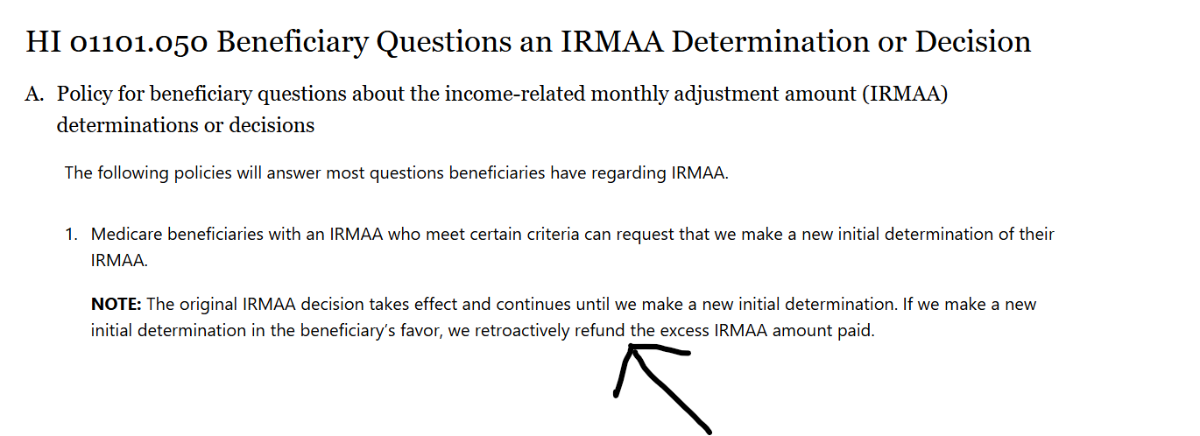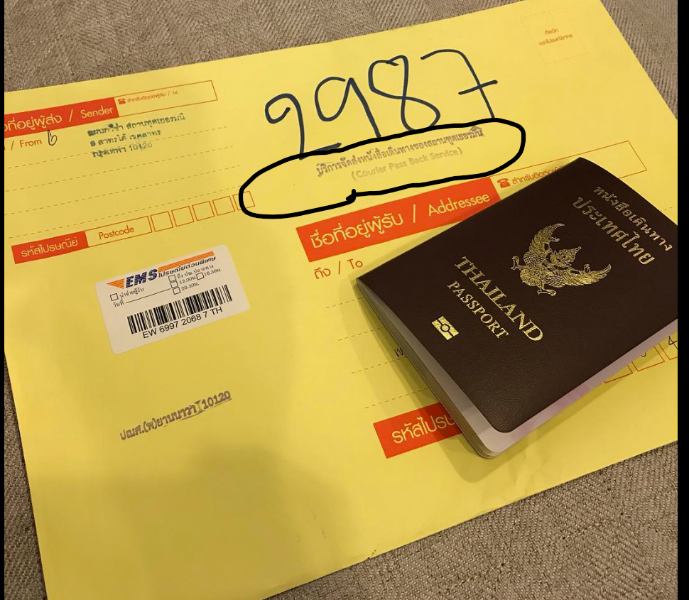-
Posts
29,134 -
Joined
-
Last visited
Pib's Achievements
-
2025 SSA Form 7162 - "Hello, are you dead yet?" forms.
Pib replied to connda's topic in US & Canada Topics and Events
I just got off the phone with SSA Intl Ops 8 July/8:30pm Thailand time...was on hold for about 20 minutes until I got a human. I asked if 7162's have been mailed yet. The rep started off by saying they are mailed-out in May/June. I responded by pointing out this is July and crossfeed indicates no one has received a 7162 yet and maybe the mailing has been delayed. The rep then said they are "being mailed out" or I could download a blank 7162 and mail it in. When I pressed a little more (politely) to if being "mailed out" really meant the mailing was delayed this year I got a Yes. The rep's "tap dance" responses implied to me the SSA didn't want to flat come out and say the 7162 mailing has been delayed for this year (or at least the rep I got didn't want to say such until pressed a little). I expect depending on the rep that answers a person's call might give a little different answer since it involves an annual SSA task not being performed on time for this year...that is, actual mailing of the 7162 in May/Jun......like last year's mailing which occurred 6 June. Oh well, hopefully the 7162 will show up by the end of July. If not I will fill out a blank one and mail it come early August---and then the bar-coded one mailed out by SSA will probably arrive my mailbox next day. 😜😀 -
Not sure what you mean by "...actual #..." According to DLT stats (a direct cut and paste) above shows actual Tesla registration numbers by month for Jan, Feb, Mar, Apr, May and Jun.
-
By out of sync you mean BIG registration increases for May and June I expect it's due to the aggressive price reductions Tesla Thailand has implemented over the past few months. And it's not only price reductions in Thailand but in many other countries as Elon has PO'ed a lot of potential customers with his past bromance with Donald and his former driving of DOGE (Dept of Govt Efficiency). But price reductions can cause people to act like the three monkeys of hear, see, speak no evil when buying a product.
-
2025 SSA Form 7162 - "Hello, are you dead yet?" forms.
Pib replied to connda's topic in US & Canada Topics and Events
Based on news media reports over the past few months talking DOGE activities/impacts, such as causing delays in contract awards which support govt operations/activities, quite a few govt employees/govt contractors losing their jobs, a backlog of workload, etc., I expect the DOGE turmoil has caused this 7162 mailing delay. SSA operations have definitely been impacted....hopefully the SSA and other govt agencies will be able to get back on the rails over the coming year. -
Yea...still kicking according to DLT stats. And BEV's total registrations are definitely on the rise. Last registration month of May was a very good month for BEVs and the latest registration month of June is even better with 12,893 new BEV registrations. And BYD is kicking butt...the pack leader! And when looking at total RY1 category (private vehicle of no more than 7 people...gas/diesel/EV/etc) ) registrations of 45,691 for June, which includes the 12,893 BEVs, that equates to a a little over 28% of new RY! registrations being BEVs. Snapshot of Total and Top 10 BEVs registrations Jan thru Jun 2025....the first yellow highlighted number is total BEVs registration for June 2025...then the Top 10 BEVs numbers are listed below that. Neta number for June also highlighted which EOW used in his chart above.
-
-
When did you officially file a SSA 44 form...that is the date SSA received it. Say add 10 days to the date you mailed it. What date do you esimate? The reason I ask is the reason the Palm Beach may have said no reduction till next year if your SSA 44 is approved is because you may have missed the window for filing a SSA 44 for the current year (which I think from quick review of the SSA POMS would have been end of March 2025) which means the SSA 44 (if approved) would not result in an IRMAA reduction until this coming 1 Jan 2026. Now if filing the SSA 44 before the end of March 2025 that could have resulted in the IRMMA reduction effective 1 Jan 2025. Yea, I think from quick review of the SSA POMS and the IRMAA notice you would have got in the mail in late 2024 that it "may" be you may have missed the SSA 44 filing "window/cut off" for it to effect/reduce/eliminate your 2025 IRMAA rate. But I'm not sure....it's just the all the lawyer talk in the SSA POMS has me thinking that right now. Good luck...hope you get the IRMAA reduced "before" it would automatically go down due to lower income reflected on future filed federal tax return. Cheers.
-
US Passport Renewal Update Information
Pib replied to tkramer's topic in US & Canada Topics and Events
I got an answer form the US Embassy-Bangkok few days ago. Basically if renewing your passport book "and" passport card at the same time you must include both your book and card in the renewal package. If renewing your book "only," then you only need to include the book. If "only" renewing your card you only need to include the card. So, if you have a passport book and passport card which expire at different times....like maybe years apart like my book and card.... if your card is say expiring next year (like mine) but your book does not expire for numerous more years (like mine) then when your renew your card you only need to mail in card--no requirement to include the book. That's good as I wouldn't want to be without my passport book for a month or two just because I need to renew my passport card. Vice versa if your card is still good for many more years but your book is expiring soon then you only need to mail in your book if only renewing the book. However, if your passport book and card have expiration years apart because you got them at different times you can renew both "at any time" like renewing both at the same time and when the renewed book and card are issued their dates will now be synced. For that renewal you will need to include both your current book and card. -
US Passport Renewal Update Information
Pib replied to tkramer's topic in US & Canada Topics and Events
From some googling on this subject/some of your questions the "Thai Postal Courier Pass Back Service/Envelope" does include EMS tracking. Below is a picture I googled-up...found it on a Facebook page. The Thai and English text I circled says: " German Embassy Passport Delivery Service" in Thai (according to Google Translate) and then in English "Courier Pass Back Service." Don't know why they show a Thai passport laying on the envelope...and notice the EMS sticker/tracking number. And then below the picture is a Google AI description. And please note the Courier Pass Back Service is just not just for the US Embassy related docs but the Courier Pass Back Service can apparently be bought for other purposes/for most any organization/person that needs to provide a return mailing envelope. Snapshot from a Facebook page. Google AI Overview -
US Passport Renewal Update Information
Pib replied to tkramer's topic in US & Canada Topics and Events
Regarding the ThaiPostal tracking number for the return mailer (i.e., when the embassy mails the renewed passport back to you), while the "tracking number" is contained within your order for the mailer when your passport arrived back in the mailer how did the tracking number appear on that mailer? Was it on a separate sticker with bar code and number like when using EMS.....was it just a number maybe with a bar code on a preprinted address label.....or was it XYZ? Just wondering how easy or hard it might be for the ThaiPostal "not" to do scans on the mailer based on how the tracking number appears on the mailer. I can sure see that if the tracking number does not get scanned when it begins its trek on its way to you that it will not appear in the ThaiPostal tracking system as it will continue to show as "data not found" in the tracking system. When a person uses EMS like mailing from the post office the clerk sticks an EMS tracking label containing a number & bar code on the envelope and then scans it which loads that tracking number into their system as being received/mailed from that post office. And you can see such within the ThaiPostal online tracking within a few hours and sometimes immediately. That separate EMS label kinda stands out and acts as an attention getter for the postal carrier to do scans along the way. But if this return mailed does not have a separate tracking label maybe that sets the stage for scans not to be done....doesn't catch the attention of the postal carrier to do a scan. Well, I'l get a chance to personally see how the tracking numbers appears (or doesn't appear) on the mailer around the end of next week when the wife's renewed passport should have arrived back from the US passport center to the Bangkok Embassy and the embassy remails it to her in the mailer. I'll continue to do daily checks of the ThaiPostal tracking system to see if tracking data appears.. Time will tell. -
US Passport Renewal Update Information
Pib replied to tkramer's topic in US & Canada Topics and Events
Yeap...understand. That's why a person would need to check the tracking number daily at the ThaiPostal web site or using their mobile app. I use their mobile app. It's just one of a half dozen shipment tracking mobile apps like DHL, USPS, etc., I have on my phone. I already have the wife's return mailer tracking number loaded the ThaiPostal app that supposedly will give me an automatic notification once the embassy remails the passport. But I won't solely rely on the automatic notification and just try to remember to check daily. Literally just takes 10 seconds or so to check using the mobile app. Now if the embassy don't use the mailer that was bought for some reason and instead uses another mailer then I expect the current tracking number will be useless for tracking. -
US Passport Renewal Update Information
Pib replied to tkramer's topic in US & Canada Topics and Events
But you could have tracked the item by getting the tracking number from your ThaiPostalMart online account when you placed the Bt100 remailer order. There it shows your order number "and the tracking number." I don't know why the tracking number is not shown on the order confirmation/notice....but as mentioned the tracking number is shown in the online order transaction info. -
US Passport Renewal Update Information
Pib replied to tkramer's topic in US & Canada Topics and Events
I expect the Embassy expects the person to track the Bt100 mailer tracking number as that would tell when they mailed it. Did you use that return mailer tracking number (not to be confused with the order number)? When looking at other embassy websites in other countries and even the State Dept general instructions they say to use the return/prepaid mailer tracking number. I expect the State Dept/embassy figure by telling folks to use the return mailer tracking number then that's one less task they need to accomplish....save a few minutes/X-amount of manhours of work I guess. -
US Passport Renewal Update Information
Pib replied to tkramer's topic in US & Canada Topics and Events
Yes, she had to submit both since both were being renewed...both were expiring at the same time. Now if a person's passport book and card have different expiration dates....like maybe numerous years apart, the Embassy instructions are unclear to me as to if a person only needs to say renew their passport card, do they also need to include their passport book to get the card renewed OR do they only need to include their passport card if only needing to renew the card. I have queried the embassy for clarification because I don't want to include my passport book and be without it for 1 to 2 months just to renew my passport card. My passport book and card are out of sync by "years" right now....if I have to send in both book and card to only renew the card I'll probably just let the current card expire and then wait until my passport needs renewal "still years down the road" and then get a new passport card....that way I get the book and card expiration dates synced-up. And Yes, just "one" order covers both. The passport book will supposedly come back in the mailer you ordered and "if" the passport card comes in a separate mail it will just be in a standard 1st class type envelope. From past renewal of book & card for both the wife and I the cards arrived several weeks later in separate, simple 1st class USPS envelopes....and back then you also only provided "one" prepaid envelope for return mailing just like now. Now the status update notice the wife got said both the passport book and card were mailed. To me that could imply both would be coming back at the same time and maybe in the same package. HOWEVER, that same update notice then goes on to say the book, card, and any supporting docs are mailed in separate packages. See partial quote below. Will have to wait and see if book and card arrive in same mailer or if it occurs like in past renewals where the book arrives in the pre-paid mailer but the card shows up weeks later in a 1st class USPS envelope. Regarding the ThaiPostal mailer, the parcel tracking number and purchase order number are different. The parcel tracking number did "not" appear on any purchase order correspondence I got...only the order number appeared which is "not" a tracking number. However, if you log onto your ThaiPostalMart account where you ordered the mailer, click your User ID, select My Account, then select My Purchases, when you look at the mailer order details it will show the order number "and the 13 digit tracking number." The tracking number is the typical 13 digit number that start with two letters, then 9 numbers, and then ends with two letters (typically letters TH for Thailand).




















